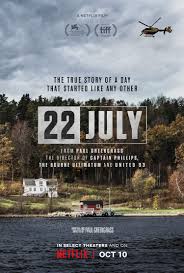Boy Erased
Director: Joel Edgerton
Starring: Lucas Hedges, Russell Crowe, Nicole Kidman, Madelyn Cline, and Joel Edgerton
For many of us, the correlation of “erasing” something is in direct reference to righting a mistake, correcting something that didn’t turn out how we perceived. “Boy Erased” is a film exactly about that, though in a far more horrific and inhumane way. What is being “erased” in this film isn’t a mistake on an art project or a misspelled word on a hand-written letter, it’s the identity of a young man who is struggling with his sexuality and the conflicts it has on his faith. The people doing the “erasing” are his parents through a conversion therapy program. “Boy Erased” is a horror film in the most reality driven way.
Jared Eamons (Lucas Hedges) is a college student with loving parents who have supported him in every aspect of life. His father Marshall (Russell Crowe) is a car dealership owner and a minister in the local church, his mother Nancy (Nicole Kidman) is a proud wife and even prouder mother. Jared, trying desperately to keep his secret, is forced to come out to his parents. They are not receptive and through guidance from members of their church Jared is sent to the “Love in Action” program, a conversion therapy program.
The film is based on the memoir of Garrard Conley and adapted for the screen by Joel Edgerton who also directs and stars in this film. Mr. Edgerton, who proved his skill behind the camera with the 2015 thriller “The Gift”, shapes “Boy Erased” with a jumping narrative that switches from the past into the present. It helps in quickly establishing the key moments that lead to Jared’s stay at “Love in Action”. Unfortunate , here also lies the problem with the film. The aspects of the past that are explored during the film are so neatly packaged that its easy to lose sight of the complications that would exist with a family so committed to their faith that they lose sight of their own son’s physical and mental well-being. Lost is the emotional conflict for the family who aren’t necessarily bad people, Nancy has a few moments of doubt, as they are being guided by the structure and views of their faith and other people who have no connection to Jared.
Still, the performances are what transcend the simplistic designs of the character and narrative. Lucas Hedges does a great job of displaying the concerns that exist with his decision of embracing his feelings and committing to a wayward treatment for the comfort of his family structure. Russell Crowe and Nicole Kidman are equally good too; Mr. Crowe offers a convincingly staunch approach to the portrayal and Ms. Kidman does a great job of being the compassionate mother who is skeptical of the entire process but is bound to the hierarchy that exists within her religious foundation. Joel Edgerton plays the leader of the therapy center, it’s a character who epitomizes the hatred that exists with those who are unwilling to accept people regardless of their differences.
“Boy Erased” has some truly disturbing and troubling moments, a scene of sexual assault and the abandonment seen in Jared’s eyes when he reveals his feelings to his family are completely heartrending. Joel Edgerton never tries to sensationalize the drama during this film, instead, the director quietly guides the viewer into the situation and diverts from the perils that may exist along the way. The film makes a point about the terrible things that happen every day in America, both inside terror facilities like conversion therapy clinics but also the misfortune that enters the home with parents and friends who are unaccepting of the feelings and emotions of others. While the narrative could have pushed for more insight and observation of Jared and his family’s journey, the effort being presented in “Boy Erased” is well-intentioned. Sometimes you don’t need ghosts or masked killers to bring horror to life, sometimes reality is all the monster you need.
Monte’s Rating
3.25 out of 5.00





























